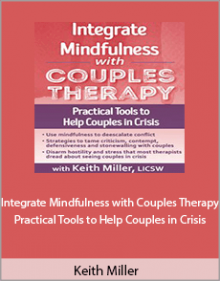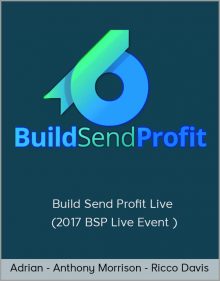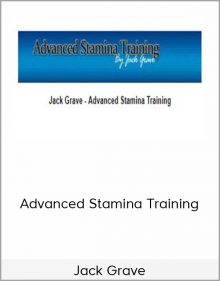Blogging Basics For Business
Original price was: $67.00.$27.00Current price is: $27.00.
Blogs also position you as an authority in your niche. It’s one thing to tell people on a sales page that you have 10 years of experience, but it’s another thing to prove your know-how via informative blog posts.
- Description
- Reviews (0)
- More Products
Description
Blogging Basics For Business
How to Start a Blog that will Support Your Online Business
Morgan Timm
| Oct 23, 2018
If you’re looking for a way to build your brand and get eyes on your business, blogging is a great place to start
In fact, adding a blog to your website gives you a 434% higher likelihood of being ranked highly on search engines like Google. Search engines crawl websites trying to find the best and most up-to-date content on any given topic, and updating your website via weekly blog posts tells Google that what you’re sharing is recent and relevant.
Blogs also position you as an authority in your niche. It’s one thing to tell people on a sales page that you have 10 years of experience, but it’s another thing to prove your know-how via informative blog posts.
Even better? Starting a blog to support your business isn’t hard. The set-up is easy, and if you stick to a schedule for creating content, the upkeep is simple, too.
Get the resources and tracking you need to effectively make money with your blog
A full list of resources plus a tracking guide to help you monetize your blog.
Get the cheatsheet
What you’ll need
The beauty of blogging is that you really don’t need anything to get started other than a computer and Internet. But having a repertoire of great tools can only serve to help you when starting out with a blog. The tools I name here are merely suggestions, and you can certainly succeed using others—but if you’re looking to build your blogging biz arsenal you may want to start here: A domain name. Buying your domain name can help set you apart from the competition. It only costs a few dollars, but it goes a long way towards making you look more professional than if you were blogging on a .blogspot or .wordpress URL. My favorite place to buy domain names is Google Domains, because you can set up your custom email account with your new domain, but NameCheap, Hover, and GoDaddy are also popular domain registrars.
Hosting. Think of your domain name as your street address, and your host as your actual home. Paying for hosting is like renting an apartment, and your hosting provider is your landlord. You can host your blog through providers like Hostgator or BlueHost, or set up a blog with your Teachable school. Setting up a blog within your Teachable school is as simple as going to Settings > Labs and then hitting “enable blog.”
Visual elements. Most blogs use visual elements of some sort. If you go to the Front Page of the Teachable Blog you’ll see we use illustrated blog headers.
A niche. To support your online business with your blog, make sure you create content that your ideal customer is interested in. It sounds basic, but it’s easy to go off course and blog about everything under the sun (once I wrote about vegetarianism and my audience of fashion lovers revolted!). If the product you’re selling teaches people how to create a curriculum for a kindergarten class, it won’t make sense to your audience if you’re posting blog posts about styling a scarf 12 different ways.
Think of your blog as a tool for priming your audience to buy. Create content that takes people from interested to ready to take your online course.
Everything you need before you launch your blog
Once you’ve checked off this list…
Purchased a domain
Secured hosting
Identified your niche
Sourced visuals for your blog (like headshots!)
…You’re ready for the next steps.
Now, this is where the magic happens. If you’re half as impulsive as I am, you’re likely ready to hit that “publish now” button and bring your blog to life.
I understand the excitement, but I caution you to slow down. Even with the basics set up and ready to go, there are a few more things you should consider.
If you’re motivated by due dates, set a “launch date” and try to have everything listed below ready to go:
1. A backlog of content
Before you hit “publish,” build a backlog of posts that are ready to go. You need a backlog for two reasons.
First, it’s great to have several posts live on launch day so your audience has more than just one thing to look at.
Second, it’s important to post consistently. Your life as a blogger can get busy, and you never know when you’ll be thrown a curveball and unable to produce new content on schedule. If you have even just three or four posts on the backburner ready to pull out at a moment’s notice, you won’t have to worry about scrambling to throw together a post when life gets hectic.
2. A vision for your visual brand
When I say you need a “vision,” I mean that you need to ensure that your blog and brand (and your online business) have a cohesive look. A branded site helps visitors see you as a professional and an authority.
For more on choosing a color palette check out this guide or take this quiz to see where you might want to start in choosing your brand colors.
If you already have an active online business, brand your blog with the same visual elements you’ve used for your business so that everything is cohesive.
3. Content upgrades
One of the most important aspects of your online business is your email list, and a blog provides you with unlimited opportunities to collect more email addresses. You want to make sure that the people who visit your site end up on your list (and become customers later). One of the easiest things you can do to collect email addresses is to offer content upgrades within your posts.
A content upgrade is bonus material your audience can access by sharing their email address. This bonus material can be anything from a free video you recorded to an ebook. You can find more on creating content upgrades here.
4. An editorial calendar
An editorial calendar can help you be more productive by giving you a visual cue of exactly what you need to accomplish by when. Plus, putting your content on a calendar helps you plan around seasonal events you might want to write about, like the holidays.
Pssst. We use Asana for the Teachable blog editorial calendar, here’s a look at the last two weeks:
5. Supplementary pages
You also need the basic “business” pages for your blog. Definitely write an “about me” page, a contact page, and a services page (if you have any to offer). This will help your audience get a better idea of who you are and what your business looks like.
Here is what the navigation bar on my personal blog looks like:
Get the resources and tracking you need to effectively make money with your blog
A full list of resources plus a tracking guide to help you monetize your blog.
Get the cheatsheet
How to write blog posts
Writing the actual blog posts might seem like a no-brainer, but they can be trickier than you think. Expressing clearly how to do something that comes second-nature to you can result in a lot of rambling and talking in circles.
1. Outlining your blog post
One way to combat this is by outlining each blog post you create. Think about formatting what you’re trying to teach into a step-by-step guide.
Whenever I sit down to write a blog post for the Teachable blog, I use an outline that looks like this:
Introduction
Why does it matter / why should people know this
Step #1
Supporting tips and stats
Supporting tips and stats
Step #2
Supporting tips and stats
Supporting tips and stats
**etc. For all following steps
Conclusion
Any questions?
When you break down your post in that manner, it helps you think about what you’re teaching in a simpler way. For example, if you were trying to explain to someone who had never seen a car how to drive, you’d probably turn into a rambling mess. If you were asked to take 2 minutes to break driving down into steps like turning on the ignition, putting your foot on the brake, and shifting to drive, you could format your lesson a little more clearly.
The better versed you are on any topic, the more important it is to break it down step-by-step. When you learned something 30 years ago, you might find yourself glossing over the parts that you now think of as simple or obvious, forgetting how much you struggled with them when you began.
2. Post length
Researching for this post, the worst advice I saw recommend writing no more than 400 words per blog post, claiming people might get bored. Personally, though, I write my blog posts with hopes of ranking well on Google.
And one thing that Google loves? Longform content.
Google wants to show the best of the best on their front page. They don’t want half-baked articles that are going to leave readers wondering. One way Google gauges how informative a post might be? Length.
You can call your post “The Ultimate Guide to…” all you want, but Google isn’t going to buy it unless you’ve got the length to back it up. I can’t come up with a single post you can create a complete guide to in less than 1,000 words.
3. Break it up
Break your blog posts up with headings, bullet points, and images. Super long posts are great for Google, but they can be intimidating for your readers if your post is just a huge wall of text.
Breaking your post up will make it feel more “munchable” and help your audience process what they’re reading by offering them supporting imagery and headings.
This post is thousands of words long, but doesn’t feel intimidating because it’s so broken up:
4. Each post should have a purpose
I can write a 2,000-word post about what I did over the weekend, and a small number of people might even read it and be entertained—but for the most part, nobody is going to get anything from reading it. This post, on the other hand, has a clear purpose: to help you successfully set up a blog that will support your business.
Before you set out to start writing, ask yourself what you’re trying to accomplish with every post. You can be teaching your audience a new skill, or helping them get a better understanding of your niche overall.
Like I mentioned earlier, your goal with your blog should be getting your audience one step closer to buying your product. You do this by helping educate them on your area of expertise and have them wanting to learn more.
Optimizing your post for search engines
This is where things start to feel extra tricky. Most of us didn’t grow up hearing terms like “SEO,” and optimizing your content sounds intimidating. At its root, all search engine optimization is, is you making sure Google understands what your blog post is about.
You do this by writing captions and alt-text for your images, making sure to use your “keywords” in your blog post (these are the words people will be googling to find your post!), and linking to relevant content.
Now, that’s an oversimplified version of Search Engine Optimization, but if you’re just a beginner it’s a good start.
1. The text you use as alt-text for your images should clearly describe what your image is and how it fits into your post. For example, on this post, I’ve got a picture of our editorial calendar up above. The alt-text is: “Creating an editorial calendar for your blog is a great way to organize yourself and plan content that will support your online business.” Google doesn’t know that the picture is relevant to my post, but the alt-text tells them that it is.When you’re adding alt-text to an image in WordPress, it’s as easy as clicking the image, clicking “edit” on the pop-up that will appear, and then adding the alt-text to the alternative text box.
If you’re blogging somewhere other than WordPress you can Google how to add alt-text to your images or check out how to do it with SquareSpace or HubSpot.
2. The keywords you use for your post should be abundant but not spammy. Keywords are the defining words and phrases that describe what your blog post is about. This post is about starting a blog to support your online business. Blog is written 46 times, the phrase “support your business” or “support your online business” is written 5 times. Blog is less specific and can be used a lot more often. If every time I wrote blog I changed it to “blog to support your online business” that would be annoying for you to read and Google would likely think it was spam.
If you are interested in figuring out which keywords you should use, this guide is a great start.
3. Link to relevant content to help create a “web.” By linking to posts related to your post, you’re helping Google categorize you with like content. You definitely want to link to related posts that you’ve already published yourself, but also link to posts that other people wrote that might be helpful, too.
Linking is another way to show Google that you’ve done your research and you really know what you’re talking about.
Pro tip: I use the free version of SEO by Yoast on my WordPress blog. It analyzes your content for you and tells you where to make improvements.
Proofread your posts before hitting publish
In the 4+ years I’ve been writing online, I’ve had more embarrassing typo related faux pas than I care to count.
It’s hard to portray yourself as a professional when your posts are riddled with typos and impressive words that you’re not-so-impressively using. I read every blog post that I write out loud before publishing. For me, it’s easier to spot mistakes by ear than it is by scanning written text.
I also swear by using Grammarly, because they catch the mistakes that I don’t. I’m only on the free plan, but they still find 15+ errors in every post I write.
Promoting your business with your blog
Once your blog is up and running, there are a few extra steps you can take to help drive traffic from you blog to your business.
Add it to your navigation bar
First, put a link to your business page on your navigation bar. Your navigation bar should feature your most important links, no more than 6 or 7. This gets people clicking on what you most want them to click on, and they’re more likely to find your business if it’s featured right at the top of your website.
Depending on the nature of your business, the text you use might be anything from “shop” to “courses” to “coaching.” Use whatever makes the most sense for what you offer.
Mention your business
If the goal of your blog is to promote your online business, make sure that you’re regularly mentioning it and linking to it within your blog’s pages and posts. You might even want to include a link to your business in an “about me” section on the sidebar of your blog. This will make your link visible on every page of your blog.
You should also mention your business in all of your stagnant blog pages like your about me and contact me page. The more links you have pointing to your business, the more likely your audience will click through and become a customer.
Offer free resources on your posts
If you want to start collecting email addresses for your list with your blog (and you should!) start offering free content upgrades with your blog posts. These content upgrades should be related to your business and funnel people to your business pages.
They don’t have to be a huge time commitment to create, either. If you wanted to you could even offer the first lesson in one of the courses you’ve already created as an upgrade. Advertise it as exclusive access to your paid program and use that to try and get your audience hooked.
If they love that first lesson from your course, they’ll be more likely to take the plunge and purchase the entire thing.
Blog about issues related to your business
Like I mentioned earlier, linking to your business in your blog posts will help drive traffic. What’s more effective, though, is blogging about problems your audience might be having and then linking to your blog post.
If you’re a gardening blogger, mentioning something like, “So many of you have been asking how to keep your plants alive in the winter, so I wanted to share my 6 step strategy with all of you. If you’re looking for something more in-depth, though, you can check out my gardening courses here.”
Then you want your blog post to be incredibly helpful (you are trying to make a great first impression, after all) and then link to your course or business again at the end.
Something along the lines of, “Now that you know how to transition your summer plants to an indoor setting, consider checking out my online courses. Whether you’re looking to build an indoor greenhouse or compost your kitchen scraps for fertilizer I’ve got courses covering all of your potential gardening woes.”
Be the first to review “Blogging Basics For Business”
You must be logged in to post a review.
-
Sonixinema London Boyd 1920s Upright KONTAKT
Original price was: $39.00.$17.00Current price is: $17.00. Buy now -
Keith Miller – Integrate Mindfulness with Couples Therapy: Practical Tools to Help Couples in Crisis
Original price was: $219.99.$43.00Current price is: $43.00. Buy now -
Joe Vitale And Steve G. Jones – Wealth Trigger 2.0: Reloaded
Original price was: $97.00.$37.00Current price is: $37.00. Buy now -
Data Storytelling With Qlik Sense
Original price was: $124.99.$42.00Current price is: $42.00. Buy now -
SkilledAcademy – Trading Systems Supremacy
Original price was: $1,297.00.$137.00Current price is: $137.00. Buy now

























Reviews
There are no reviews yet.